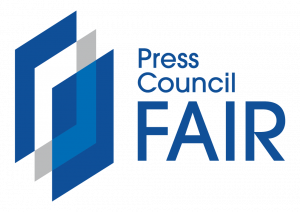 OpenRAN technology promises to revolutionise network management for operators, but it’s been slow to mature and show its true value, subject matter experts have told TechCentral.
OpenRAN technology promises to revolutionise network management for operators, but it’s been slow to mature and show its true value, subject matter experts have told TechCentral.
Open radio access networks (OpenRAN) represent an evolution in the architecture of the part of a telecommunications network that connects user devices to the network wirelessly – in essence, the bit between your smartphone and the nearest base station. OpenRAN’s key principle is to standardise and decouple the components of the RAN so they are interchangeable and vendor neutral.
“RANs are traditionally vendor-locked, vertically integrated telecoms architectures composed of base stations, radios and antennae that enable wireless communications, such as 4G, 5G and subsequent generations of communications technologies. By disaggregating RAN architectures – thus making them ‘open’ – more companies can pursue innovation on advanced 5G network architectures and related security,” said a June 2022 statement by the US department of defence.
RAN infrastructure is the most expensive part of building and maintaining a mobile network. Operators are drawn to OpenRAN by the promise of reduced infrastructure spend and the release from vendor lock-in that a disaggregated architectures implies. Proponents of open standards for RANs believe they will allow more original equipment manufacturers (OEMs) – a market dominated by Huawei, Ericsson and Nokia – to enter the market, creating a more competitive environment that is likely to increase innovation and reduce costs for operators.
OpenRAN adoption, however, cannot steamroll ahead without a set of architectural standards that are universally available and agreed upon. The two main bodies developing these standards are the O-RAN Alliance and the Telecom Infra Project (TIP). The O-RAN alliance was founded by five companies – AT&T, Orange, NTT Docomo, China Mobile and Deutche Telekom – and has the most comprehensive body of OpenRAN standards available. Telecom Infra Project members include operators as well as service providers, technology partners, system integrators and other connectivity stakeholders, including Intel and Facebook.
OpenRAN trials
Since standards are developed in a theoretical setting, operators worldwide are engaged in various initiatives to test the feasibility of various OpenRAN solutions. According the O-RAN website, Vodacom Group parent Vodafone Group has run three OpenRAN trials in Africa, starting with one in South Africa as far back as 2017. The second and third trials are in the Democratic Republic of Congo and Mozambique, respectively, with the former having started in 2019 and the latter in 2020.
5G Magazine reports that MTN has deployed over 200 commercial sites using OpenRAN technology in markets that include Zambia, Mozambique, Uganda and Guinea-Conakry. Initiatives in South Africa are also under way.
“MTN South Africa has conducted lab and field trials with different OpenRAN vendors. These trials continue as the products evolve and the equipment supports the required MTN network features,” MTN South Africa said in response to questions.
Read: Vodacom parent embraces Open RAN technology
Mobile operators are not the only entities in favour of OpenRAN technology. Markets like the UK are driving the adoption of OpenRAN architectures at a policy level. The rationale, according to a policy paper on OpenRAN principles published by the UK government in April 2022, is informed by how important telecoms infrastructure has become to national security and national economic interests.
“Increasing vendor diversity for telecoms networks is an essential goal for the UK and other governments internationally to safeguard security, resilience, innovation and competition in critical national infrastructure and beyond. This need is particularly acute in the mobile radio access network,” it said.
 In the South African context, communications regulator Icasa – which supports a technology-neutral licensing framework – told TechCentral that it has no official position on OpenRAN architecture but supports any compliant interventions that lead to the efficient use of spectrum. “We are cognisant of international developments relating to OpenRAN and are following those closely,” said an Icasa spokeswoman.
In the South African context, communications regulator Icasa – which supports a technology-neutral licensing framework – told TechCentral that it has no official position on OpenRAN architecture but supports any compliant interventions that lead to the efficient use of spectrum. “We are cognisant of international developments relating to OpenRAN and are following those closely,” said an Icasa spokeswoman.
On the other side of the debate are those who believe that OpenRAN is unlikely to yield the benefits that mobile operators anticipate. Ericsson and Nokia have both previously written to the US Federal Communications Commission expressing concern over a lack of transparency at the O-RAN Alliance, the slow pace at which some O-RAN Alliance specifications are being drafted, inferior performance shown by some open architectures, and how increasing the number of vendors on a site will lengthen time to market and integration costs for operators.
Perhaps most alarming are concerns about the security of OpenRAN solutions, with some experts fearful that the increased complexity of an open, multi-vendor system with multiple integration points is likely to compromise – and not improve – network security.
“The deployment of OpenRAN introduces new security considerations for mobile network operators. By nature, an open ecosystem that involves a disaggregated, multi-vendor environment requires specific focus on changes to the threat surface area at the interfaces between technologies integrated via the architecture,” said the US Cybersecurity and Infrastructure Security Agency in a report.
“In addition to addressing security considerations related to integrating components from multiple vendors, service providers will continue to deal with other considerations related to use of open-source applications and new 5G network functions and interfaces whose standards are still under development.”
Others, including South Africa’s Telkom, adopt a more midline approach, opting to disregard any speculation on the potential benefits or pitfalls of OpenRAN technology in favour of evidence.
‘Still maturing’
“Telkom believes OpenRAN will play a role in reducing the cost of RAN equipment and software, and we have engaged with leading suppliers to understand the value of the technology. However, OpenRAN is yet to prove that it can live up to its promise of reducing RAN costs while delivering similar or better performance and providing similar or advanced features as traditional OEMs,” said Lebo Masalesa, managing executive for mobile networks at Telkom.
Rain CEO Brandon Leigh presented a similar perspective. “Rain is monitoring these market developments. However, the technology is still maturing, and Rain has not committed to any OpenRAN deployments,” Leigh said.
Despite some pushback from certain quarters, and the tentative approach some operators have taken towards OpenRAN adoption, the industry is still bullish about the architectures and their future role in telecoms networks.
 “The disaggregation of software and hardware solutions with open interfaces and application programming interfaces (APIs) leverages the adoption of commercial, off-the-shelf hardware, which can lower costs and foster innovation. For the technology to succeed, the industry needs to adopt specifications defined by standards organisations like the O-RAN Alliance, such that the network performance and reliability of these networks reach similar performance levels and feature parity of traditional network architecture,” said MTN South Africa. – © 2024 NewsCentral Media
“The disaggregation of software and hardware solutions with open interfaces and application programming interfaces (APIs) leverages the adoption of commercial, off-the-shelf hardware, which can lower costs and foster innovation. For the technology to succeed, the industry needs to adopt specifications defined by standards organisations like the O-RAN Alliance, such that the network performance and reliability of these networks reach similar performance levels and feature parity of traditional network architecture,” said MTN South Africa. – © 2024 NewsCentral Media

